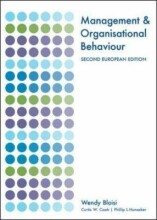INITIAL LISTING OF THE PARTS OF SPEECH
10 important questions on INITIAL LISTING OF THE PARTS OF SPEECH
What are the primary word classes or parts of speech discussed in the overview?
- VERB: example "He is ill."
- NOUN: example "The dog barked."
- ADJECTIVE: example "He's very young."
- ADVERB: example "She spoke clearly."
- DETERMINATIVE: example "We need some milk."
- PREPOSITION: example "He's in the garden."
- COORDINATOR: example "Hurry or we'll be late."
- SUBORDINATOR: example "I know that it's true."
How does this overview differ from traditional grammar?
- Pronouns: considered a subclass of nouns.
- Determinatives: regarded as a larger class, not just articles.
- Coordinators and subordinators: treated as distinct classes instead of conjunctions.
How are determinatives classified in this overview?
- Includes words like "some," "any," "each," "every."
- Different from adjectives and articles in traditional grammars.
- Higher grades + faster learning
- Never study anything twice
- 100% sure, 100% understanding
What is the function distinction involving determinatives?
- Determinative Class: includes words like "the" and "a."
- Function: can include non-word phrases acting similarly.
What distinguishes determinatives from nouns and adjectives in this grammatical overview?
- Determinatives are a separate class, not a subclass of adjectives.
- Pronouns are considered a subclass of nouns.
- Determinatives include words like some, any, all, etc.
What are the corresponding classes of phrases for the first six word classes?
- VERB PHRASE
- NOUN PHRASE
- ADJECTIVE PHRASE
- ADVERB PHRASE
- DETERMINATIVE PHRASE
- PREPOSITION PHRASE
What are the differences in the treatment of conjunctions in this overview compared to traditional grammar?
- Coordinator and Subordinator as distinct classes.
- Traditional grammar has a combined class of conjunctions with subdivisions.
Can you provide examples of phrases for each of the first six word classes?
- VERB PHRASE: She [wrote some letters].
- NOUN PHRASE: [The new lodger] is here.
- ADJECTIVE PHRASE: It's getting [rather late].
- ADVERB PHRASE: I spoke [too soon].
- DETERMINATIVE PHRASE: I saw [almost every] card.
- PREPOSITION PHRASE: They're [in the garden].
How is the class of subordinates defined in this grammatical framework?
- Subordinators like "that," "whether," and "if."
- They introduce subordinate clauses in sentences.
What are the roles of coordinators in the list of word classes?
- Combining clauses or phrases (e.g., "and," "but," "or").
- Providing alternatives or contrasts in sentences.
The question on the page originate from the summary of the following study material:
- A unique study and practice tool
- Never study anything twice again
- Get the grades you hope for
- 100% sure, 100% understanding






























